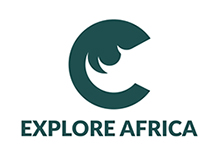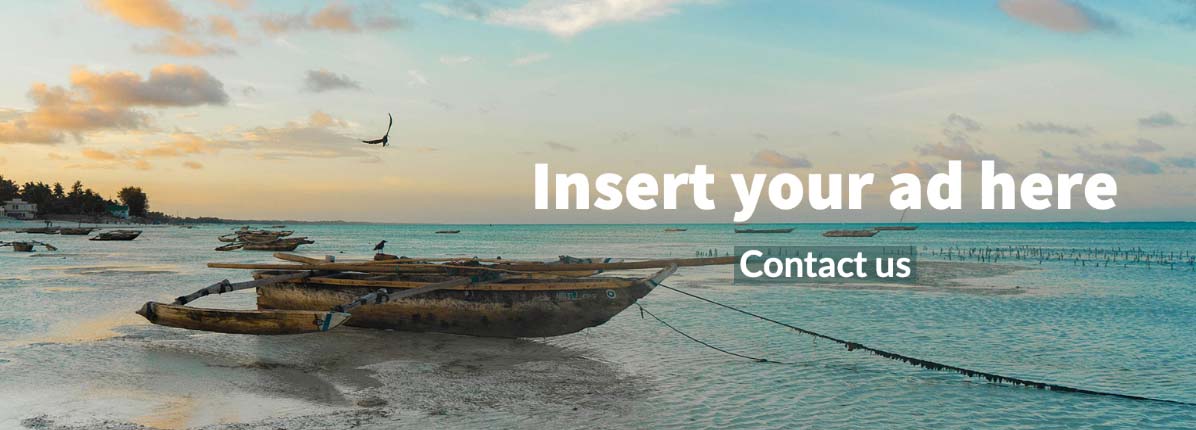Rated as one of the top 5 most beautiful countries in the world by travel guide readers, South Africa is a must see. With the extraordinary wildlife, white sandy beaches, colorful cities, year-round great weather, and exquisite wines, South Africa has a lot to offer travelers. But before you jump on a plane, read the tips below so can prepare for the journey of a lifetime.
The Republic of South Africa is the most southern point of the continent of Africa and is as big as France and Spain combined. The country shares borders with Namibia, Botswana, Zimbabwe, Mozambique, and Swaziland and is known for its stunning nature.
Geography
South Africa is mainly mountainous. There are lakes, waterfalls, high mountains, a vast wilderness, and a seemingly endless coast. You can see the ‘Big Five’ of wild animals (African elephant, lion, buffalo, leopard, and rhinoceros) from up close on safari, and it’s even possible to spot whales, dolphins, and penguins from the beach. The country has many nature reserves and wildlife parks. You can find around 20,000 different plant species and many wild animals in these areas. The coastline of South Africa is almost one long powdery-white beach from which you can walk into both the Atlantic and the Indian Ocean.
Capital
Unlike most countries, South Africa does not have one, but three capitals. In 1910 the Dutch and British rulers quarreled about a possible capital because both countries didn’t want a capital in a region controlled by the other. Eventually, they compromised by choosing a capital city in each of the three provinces and modeled their duties after the separation of powers. Pretoria received the executive branch, Cape Town the legislature and Bloemfontein is still the judiciary capital of South Africa.
Language
The variety of languages, landscapes and people in South Africa is immense. South Africa has eleven official languages and is in the top 3 countries with the most languages behind Bolivia and India. The eleven languages are Afrikaans, English, South Ndebele, North Sotho, South Sotho, Swazi, Tsonga, Tswana, Venda, Xhosa, and Zulu. Afrikaans and English are Germanic languages, and the other nine belong to the Benue-Congo languages.
Population
This great diversity also translates to the cultures of the almost 56 million inhabitants. South Africa is famous for the many ethnic groups that live together, from traditional tribes in the South African countryside to the art scene in the modern Cape Town. Most of the citizens of South Africa are Christians.
Currency
The currency of South Africa is the Rand (ZAR). The prices in South Africa are much lower than in Western countries. However, rates can differ in tourist areas. It’s customary in South Africa to give a tip of about 10% to your waiter or driver. Here’s a pro tip: get South African cash before you depart. Using the ATM at the airport in Johannesburg or Cape Town usually is much more expensive than getting the cash at a local exchange office. Make sure you check the current rates for your currency though. You are allowed to travel into South Africa with up to 5000 Rand per person in cash (which is currently about 300 euros and almost 350 dollars).
Climate
The weather in the northwestern part of South Africa is hot. It’s so dry there that hardly any plants can grow there. In this semi-desert, it is sweltering during the summer and freezing at night in the winter. That is a big contrast with the northern and eastern regions of the country because these regions have a subtropical climate. In these green parts of South Africa, it is generally warm and humid, with many (light) showers. The average temperature in Cape Town is 15°C to 30°C (59°F to 86°F) all year round. It can rain all year as well, but the wettest months are generally between May and September. Because South Africa lies in the southern hemisphere, the seasons are the exact opposite of those in Europe and Northern America. This makes South Africa an ideal sun destination for travelers from the northern hemisphere. It can be hot and humid from November until February in Johannesburg and Pretoria with average temperatures over 30°C (86°F). In June, July, and August it is cooler, although the average temperature stays between 5°C and 17°C (41°F and 63°F), even in the coldest months.
When to go
April, May, September and October are the best months to travel to the north of South Africa. January, February, March, October, and November are the best months to visit the South of South Africa. This way you can avoid the months with low temperatures and a lot of rain. However, the best time for a safari is during the South African winter (April to October). Because the winters are very dry, the game tends to concentrate around sources of drinking water. In the summer the grass is high which makes it easier for wildlife to hide. It’s still possible to spot animals during the summer though, just not as much.
South Africa Sights
The astounding nature is one of the biggest attractions in South Africa. Perhaps the most iconic place in South Africa is the Kruger National Park, a dream destination for safari enthusiasts. The animals of the Big Five (lions, buffalo, leopards, rhinos and African elephants) can be seen in the protected nature reserve of 20,000 square kilometers. In the oceans around South Africa, you can spot great white sharks, whales, penguins, and dolphins from the powdery beaches, or even while surfing the wild waves of the Atlantic Ocean. Stellenbosch is famous for its wine. It’s one of the oldest wine regions in Africa, and you’re welcome to combine a fabulous glass of wine with a braai dish (famous South African barbecue).
The highest point in South Africa is on the Drakensberg, a mountain range on the border with Lesotho. This area offers a series of spectacular views, such as on the Sani pass and in the northern Royal Natal National Park. The rock paintings from the San people in the caves are thousands of years old. But you can also ‘climb’ a mountain in Cape Town. A cable car will bring you to the top of the Table Mountain for a breathtaking sunset on one of the oldest mountains in the world.
Time zone
The timezone in South Africa is GMT+2, This is the same timezone as the western European mainland during daylight savings time. South Africa has no daylight savings time, so in the European winters, South Africa shares the time zone with only the original countries in the GMT+2 zone like Finland, Ukraine, Turkey, and Egypt.
Practical travel information: visa and drivers permit
A visa is issued automatically on arrival in South Africa, provided that your stay is shorter than 90 days. Adults need a passport that must be valid for at least 30 days on departure from South Africa (additional rules apply for children). Depending on your home country, you won’t always need an International Drivers Permit (IDP) to drive a car, but you usually do need to be able to show one when you rent a car or a motorcycle. Buying an IDP is generally only possible in your home country. Check with your government for more information about this.
Cars drive on the left side of the road in South Africa, just like in the UK. For some routes, a 4WD (four wheel drive) is indispensable, so it’s a good idea to check a map before you rent a car. You also need a bit of gas money in cash when you’re on the road. Credit card commercials often show travelers in rental cars almost out of gas when they finally spot a single gas pump in the middle of nowhere. Then some bewildered man who doesn’t speak a word of English miraculously recognizes the Visa or Mastercard logo and happily fills the tank. The truth is that not all gas stations in South Africa accept credit cards, especially off the main highways. Another reason to bring a bit of cash is so you can tip a gas station employee.
Health and vaccines
You should contact your GP or local health institute well before your trip to South Africa for a consult because you usually need at least one or two vaccines. Depending on your health, area, season and length of stay you might get vaccinated for DTP (Diphtheria, Tetanus, and Polio), Hepatitis A (jaundice), Hepatitis B, BMR (mumps, measles, rubella), tuberculosis, rabies, yellow fever, schistosomiasis and viruses that can be transmitted by mosquitoes such as Zika. Malaria also occurs periodically in some areas. Your doctor can best advise you on how to protect yourself against illness.
Safety
Crime is a risk you’ll face during your travels in South Africa, due to its poverty and social inequality. Most people visit South Africa without experiencing any incident, but it’s definitely something you should be aware of – especially around Johannesburg. So, don’t carry valuables in sight, avoid external money pouches and listen to local advise on unsafe areas.
The tap water in South Africa is safe to drink, except in the Kruger Park, Swaziland, and Lesotho. In cities and on the highways, food is generally safe. In those areas, you can also find many well-known fast food restaurants in case of doubt. Outside the cities and main roads, your only choice might be a local pub or shebeen. The food there could be less hygienically prepared than Westerners are used to.
Emergency numbers
There are three national emergency numbers to choose from when you find yourself in a life-threatening situation: 10111, 10177, and 112. This is a bit confusing. 10111 is a nationwide number for when you need the police. 10177 is the nationwide number for when you need medical help immediately, and the person on the other end of the line can then also warn the police or the fire department if necessary. 112 is the only number that is free from a cell phone, but works a bit slower because you have to walk through an automatic menu first. The recommendation for Cape Town is to call 107 for the fastest response of police, fire department and ambulance, but you can only call this number from a landline. Save these numbers on your phone, especially 10177 and 10111. Make sure your cellphone can place calls in South Africa, because these numbers are not free. In case of another calamity or for information during your trip you might need to contact the embassy for your country in South Africa. Check where this embassy is before your trip and program the phone number (especially a 24-hour number) into your phone. Have a safe trip and enjoy!


Recent Comments